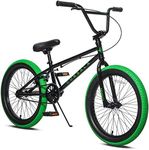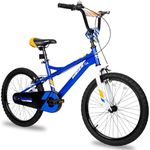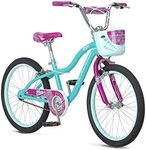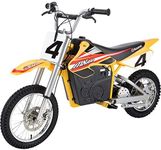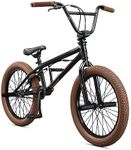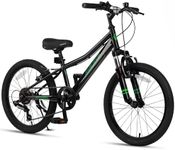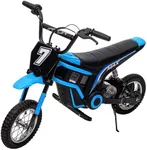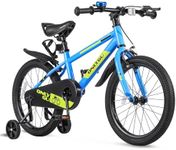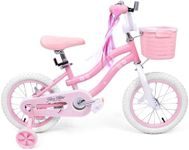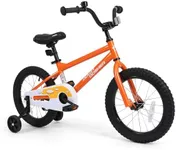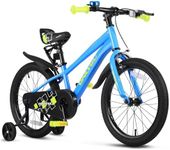Buying Guide for the Best Bike For 10 Year Old
Choosing the right bike for a 10-year-old can be a fun and rewarding experience. It's important to consider the child's size, skill level, and the type of riding they will be doing. The right bike will not only be safe and comfortable but also enjoyable to ride, encouraging them to spend more time outdoors. Here are some key specifications to consider when selecting a bike for a 10-year-old.Bike SizeBike size is crucial for comfort and safety. It is typically measured by the wheel diameter. For a 10-year-old, a bike with 24-inch wheels is usually a good fit. However, it's important to consider the child's height and inseam measurement. The child should be able to stand over the bike with both feet flat on the ground and have a slight bend in the knee when sitting on the saddle with their feet on the pedals. This ensures they can control the bike easily and ride comfortably.
Frame MaterialThe frame material affects the bike's weight and durability. Common materials include steel, aluminum, and carbon fiber. Steel frames are strong and durable but heavier, making them harder to handle for younger children. Aluminum frames are lighter and resistant to rust, making them a popular choice for kids' bikes. Carbon fiber is very light and strong but usually more expensive. For a 10-year-old, an aluminum frame is often the best balance of weight and durability.
BrakesBrakes are essential for safety. There are two main types: coaster brakes and hand brakes. Coaster brakes are engaged by pedaling backward and are simple to use, making them suitable for younger or less experienced riders. Hand brakes, operated by levers on the handlebars, offer more control and are better for older children who have developed better hand strength and coordination. For a 10-year-old, hand brakes are generally recommended as they provide better stopping power and prepare the child for more advanced bikes.
GearsGears help the rider manage different terrains and inclines. Single-speed bikes are simpler and easier to maintain, making them suitable for flat areas and beginners. Multi-speed bikes, with multiple gears, are better for varied terrains and more experienced riders. They allow the child to adjust the difficulty of pedaling, making it easier to ride uphill or faster on flat surfaces. For a 10-year-old who is comfortable riding and may encounter hills or varied terrain, a bike with 6-7 gears is a good choice.
SuspensionSuspension helps absorb shocks from bumps and rough terrain, providing a smoother ride. There are two main types: front suspension (hardtail) and full suspension. Front suspension bikes have shock absorbers in the front fork, making them suitable for light off-road riding. Full suspension bikes have shock absorbers in both the front and rear, offering more comfort on very rough terrain but adding weight and complexity. For most 10-year-olds, a bike with front suspension is sufficient unless they are doing serious off-road riding.
Fit and ComfortFit and comfort are essential for an enjoyable riding experience. The bike should have an adjustable seat and handlebars to accommodate growth. The saddle should be comfortable, and the handlebars should be within easy reach. It's important to test the bike to ensure it fits well and feels comfortable. A bike that is too big or too small can be difficult to control and may discourage the child from riding.
Safety FeaturesSafety features such as reflectors, a bell, and a chain guard are important for visibility and protection. Reflectors on the wheels, pedals, and front and rear of the bike help make the child more visible to others, especially in low light conditions. A bell allows the child to alert others of their presence. A chain guard protects the child's clothes and legs from getting caught in the chain. These features enhance safety and should not be overlooked.

